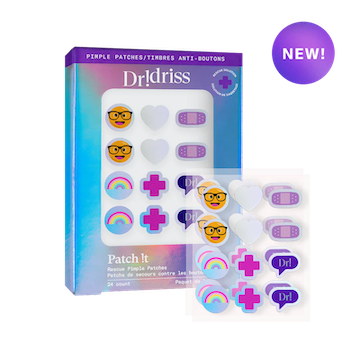The Understated Virtues of Azelaic Acid
In the beauty world, trends move quickly. One week, a buzzy peptide claims to turn back the clock. The next, a retinol variation promises miracles in a bottle. Yet every so often, the spotlight falls on an ingredient that has long been present, quietly doing its work without fanfare. Lately, that quiet hero has been azelaic acid. Social feeds are lighting up with mentions of it. Dermatologists are being asked about it. Consumers are finally starting to notice a substance that has, for decades, been sitting patiently in the background.
Azelaic acid is not new. It has been part of dermatological toolkits for years, prescribed in clinical strengths of 15 or 20 percent. Over the counter, it appears more modestly at 10 percent or less, usually dressed up in cosmetic formulations on the shelves of Sephora or Ulta. It exists in a peculiar space, somewhere between the regulatory language of drugs and the marketing gloss of cosmetics. That duality is part of its mystique, and also part of why it is so often misunderstood.
What exactly does it do? The list is impressive. Azelaic acid helps with acne by targeting the bacteria that cause breakouts. It calms the inflammation and redness of rosacea, a condition that rarely shares solutions with acne but here finds common ground. It brightens pigmentation issues such as melasma and post-inflammatory marks, working quietly to suppress overactive melanocytes, the cells that produce excess pigment. And it strengthens the skin’s barrier, ensuring that the face looks supple, calm, and intact. Few ingredients are as versatile.
Consider also its reach beyond the face. For those with keratosis pilaris, the dry “chicken skin” bumps that cluster on arms, azelaic acid can smooth the texture and ease the redness. Its range is remarkable, making it one of the most broadly useful yet often overlooked products in modern skincare.
The question of strength
The first mistake many make is choosing the wrong concentration. Think of skincare in terms of daily movement. Walking every day keeps the body well, much like over-the-counter skincare keeps the complexion steady. A few times a week, one might go to the gym with a trainer, equivalent to prescription strength products. And if something truly stubborn needs attention, there are always interventions such as lasers or more invasive treatments, the dermatological version of surgery.
Azelaic acid follows the same logic. At 0 to 10 percent, it is suitable for daily maintenance. It is gentle, supportive, and appropriate for those looking to keep redness or pigmentation under control once the heavy lifting has already been done. At 15 to 20 percent, under prescription, it becomes a more serious tool. That is where melasma and deeply set pigmentation can be tackled. And it is in this distinction that expectations must be managed. A 10 percent product will maintain, but it will rarely transform.
Not all acids exfoliate
Another source of confusion is the name itself. “Acid” suggests exfoliation. Yet not all acids remove dead skin cells. Hyaluronic acid, for instance, is a hydrator. Azelaic acid is something else altogether. Technically a dicarboxylic acid, it modifies the way cells behave. It does not sweep away the surface like glycolic or lactic acid. Instead, it works more subtly, reducing inflammation deep within the skin, adjusting the keratinization process so pores remain clear, and calming overactive pigment production.
This subtlety explains why results come slowly. It is not the instant tingle of an alpha-hydroxy acid mask. It is a long game, akin to weight loss achieved gradually through consistent effort rather than crash diets. Expecting overnight transformation is a mistake that leads many to layer on harsher actives, which in turn damage the skin barrier and undo the benefits. Patience, though unglamorous, is essential.
Texture troubles
Formulation presents another challenge. Azelaic acid is a powder, and powders are not always elegant to wear. Suspended in creams, it can feel gritty. As the water component of a product evaporates, it can leave a chalky residue on the skin. Pilling is common. The scent, slightly medicinal and chalk-like, does not help. For some, this inelegance leads to abandonment.
There is, however, a simple solution. Use it at night. Few people are judged for how they look once the day is over. A layer that resembles diaper rash cream is of no concern in the privacy of home. Apply it before bed, give the skin a full night with the ingredient, and the inelegance disappears into the dark. The skin, come morning, benefits from the unseen work.
Spot treatment potential
A final misconception lies in the belief that azelaic acid must always be used as an all-over serum step. In reality, it can be applied strategically. Hormonal breakouts along the jawline, for example, often respond well to spot application. Used this way, it minimizes redness and inflammation without overwhelming the entire face.
Here, innovation has stepped in. Dr. Idriss, a brand focused on discoloration and skin health, recently incorporated azelaic acid into pimple patches. These small, discreet patches deliver the ingredient directly to blemishes, allowing targeted treatment without the textural drawbacks of a cream. Available at Sephora, they represent the only patches on the shelves formulated with azelaic acid. It is a clever evolution, one that makes the ingredient more accessible while also sidestepping its inelegance.
A patient approach
Azelaic acid requires a mindset that values slow, steady progress. Unlike the thrill of instant exfoliation, its benefits accrue quietly. Redness softens. Pigmentation gradually fades. Skin texture improves subtly. The changes are cumulative rather than dramatic. This is an ingredient for those who prefer timeless classics over seasonal trends, the ones who know that patience often yields the most lasting results.
In a culture increasingly obsessed with immediacy, azelaic acid represents an older, wiser philosophy. It does not chase trends. It does not promise overnight miracles. It works steadily in the background, rewarding those who grant it time. Perhaps that is why its resurgence now feels timely. In an age of constant acceleration, there is something reassuring about an ingredient that insists on a slower rhythm, one that honours consistency and care.
Editorial perspective
Products like the Dr. Idriss patches exemplify how the market adapts, creating new formats that respect both science and consumer desires. For those who prefer a more traditional approach, prescription strengths remain available, offering the gym-level intervention when daily walking is not enough. Over-the-counter formulas, meanwhile, still provide a valuable supporting role.
The key lies in understanding what one wants to achieve, and choosing accordingly. Maintenance calls for gentler concentrations. Stubborn pigment requires medical strength. And all use requires patience.
The quiet renaissance
Why is azelaic acid rising in popularity now? Perhaps because the collective skin of social media users has grown weary of harsh, dramatic solutions. Barrier damage, sensitivity, and redness are widespread complaints among those who have pursued aggressive routines. Against this backdrop, an ingredient that calms, soothes, and multitasks feels like a revelation. It has always been here, waiting, but only now are more people ready to listen.
Conclusion
Skincare often mirrors culture. When speed and spectacle dominate, the slow and steady can feel radical. Azelaic acid embodies that spirit. It is not glamorous, yet it is effective. It does not deliver instant gratification, yet it offers long-term rewards. It is a multitasker, a mediator, a quiet achiever.
For those willing to trust in patience, it is worth rediscovering. Applied thoughtfully, whether across the face at night or precisely through a patch, it supports the complexion in ways both subtle and significant. Like a well-tailored jacket or a timeless piece of furniture, it proves that elegance often lies not in novelty but in endurance.













